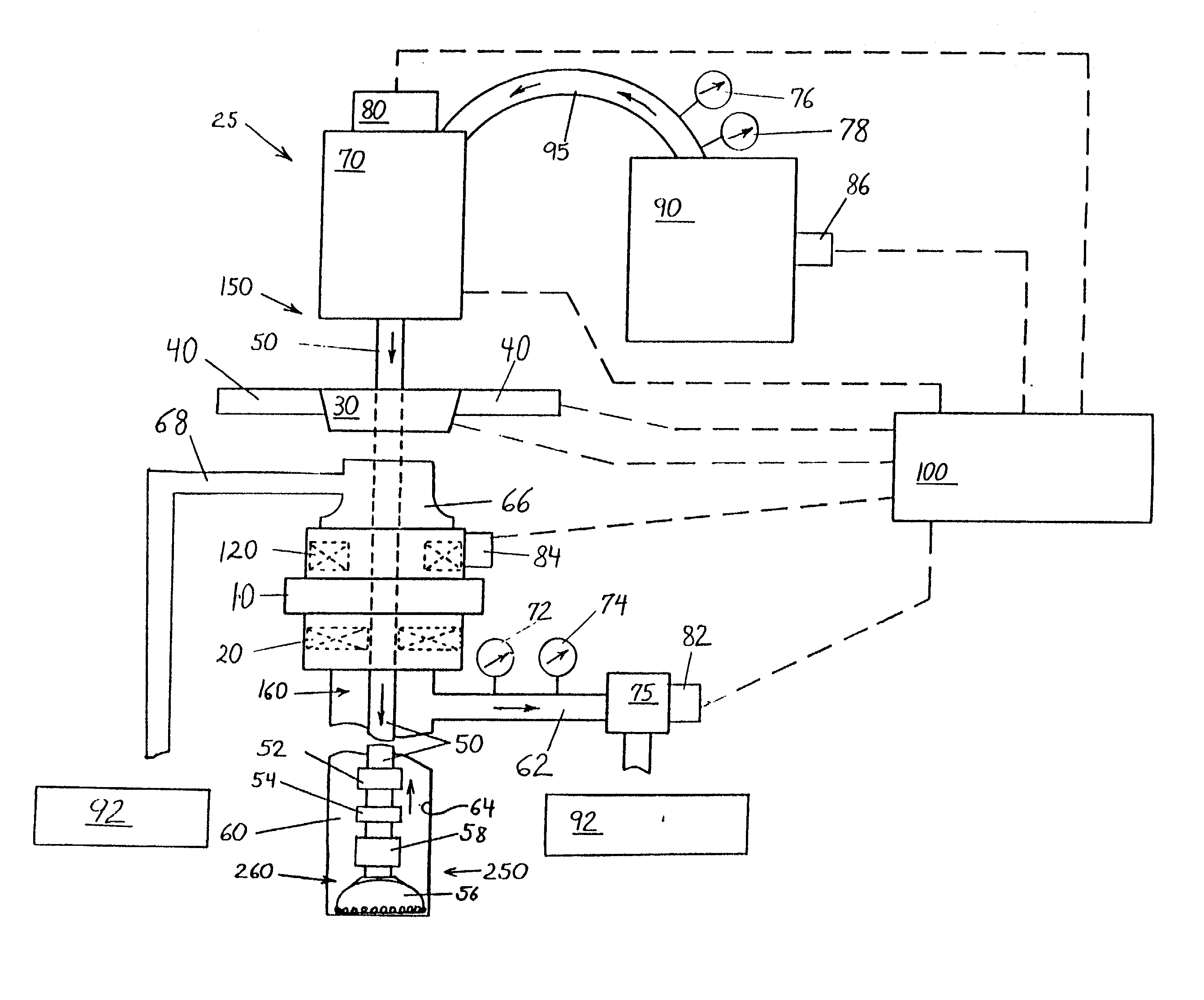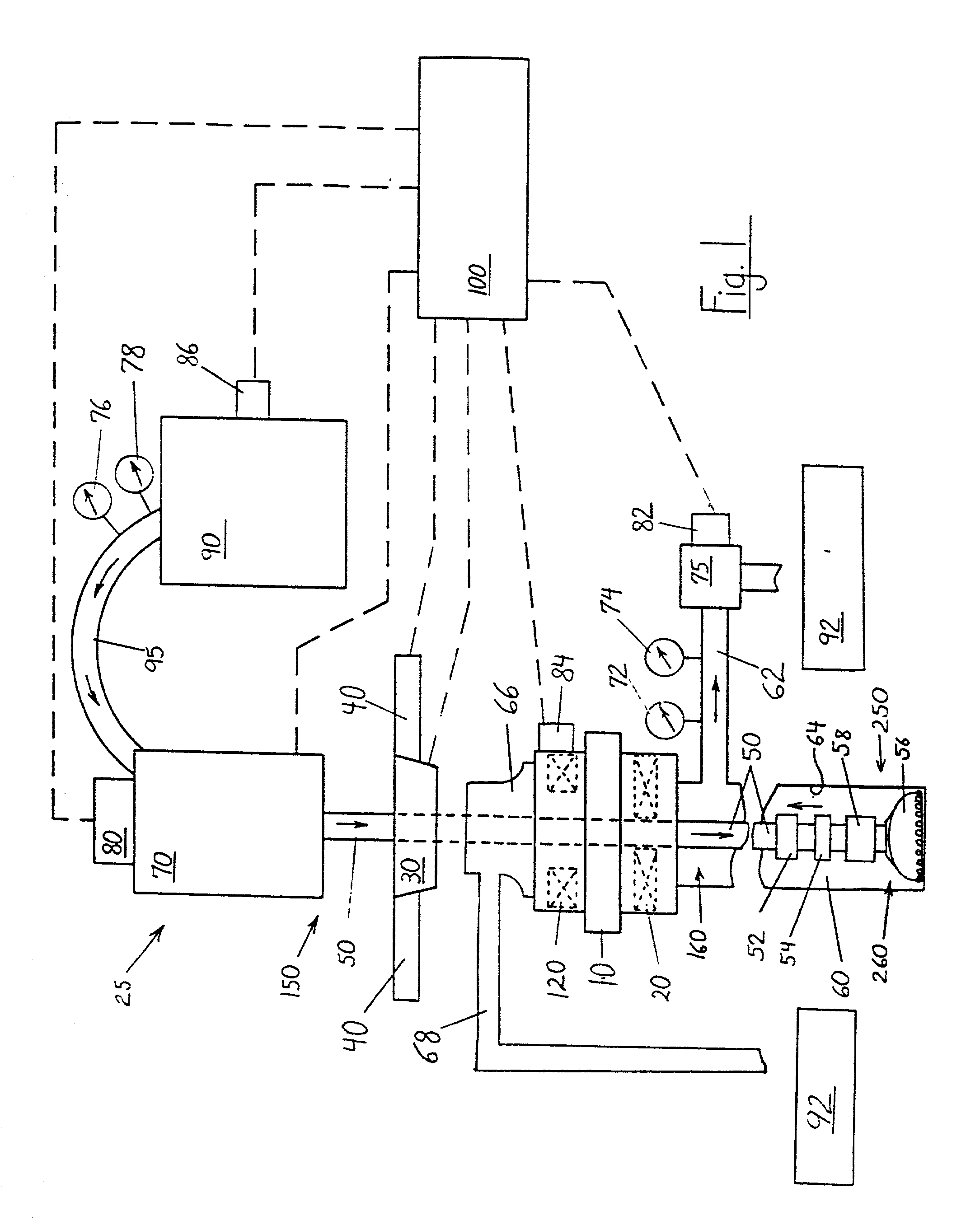Well drilling method and system
a well and well technology, applied in the direction of drilling pipes, borehole/well accessories, survey, etc., can solve the problems of substantial "uncontaminated" drilling fluid recirculation, well bore at deeper depths may not tolerate significant hydrostatic pressure changes, and drilling fluid circulation may be partially or completely lost to the formation, etc., to facilitate the maintenance of ecd
- Summary
- Abstract
- Description
- Claims
- Application Information
AI Technical Summary
Benefits of technology
Problems solved by technology
Method used
Image
Examples
Embodiment Construction
[0031] FIG. 1 illustrates an arrangement for components which may be included with a drilling rig 25 and which may be utilized to practice the present invention. A preferred embodiment for a system and method for drilling a well bore 60 through a subterranean formation may include a drill bit 56 supported upon a lower end of a drill string 250. The lower end of the drill string 250 may extend into a well bore 60. An upper end of the drill string 150 may be located at a drilling rig 25 at the surface. The drill string 50 may include a through bore to conduct a drilling fluid ("mud") through the drill string 50. The drill string 50 may comprise a series of interconnected joints of drill pipe.
[0032] A mud pump 90 located near the drilling rig 25 may pump a drilling fluid through a mud line 95, then into the upper end of the drill string 150, then through the drill string 50, then through the drill bit 56. The drill bit 56 may be located near a lower end of the well bore 260. The drilli...
PUM
 Login to View More
Login to View More Abstract
Description
Claims
Application Information
 Login to View More
Login to View More - R&D
- Intellectual Property
- Life Sciences
- Materials
- Tech Scout
- Unparalleled Data Quality
- Higher Quality Content
- 60% Fewer Hallucinations
Browse by: Latest US Patents, China's latest patents, Technical Efficacy Thesaurus, Application Domain, Technology Topic, Popular Technical Reports.
© 2025 PatSnap. All rights reserved.Legal|Privacy policy|Modern Slavery Act Transparency Statement|Sitemap|About US| Contact US: help@patsnap.com


